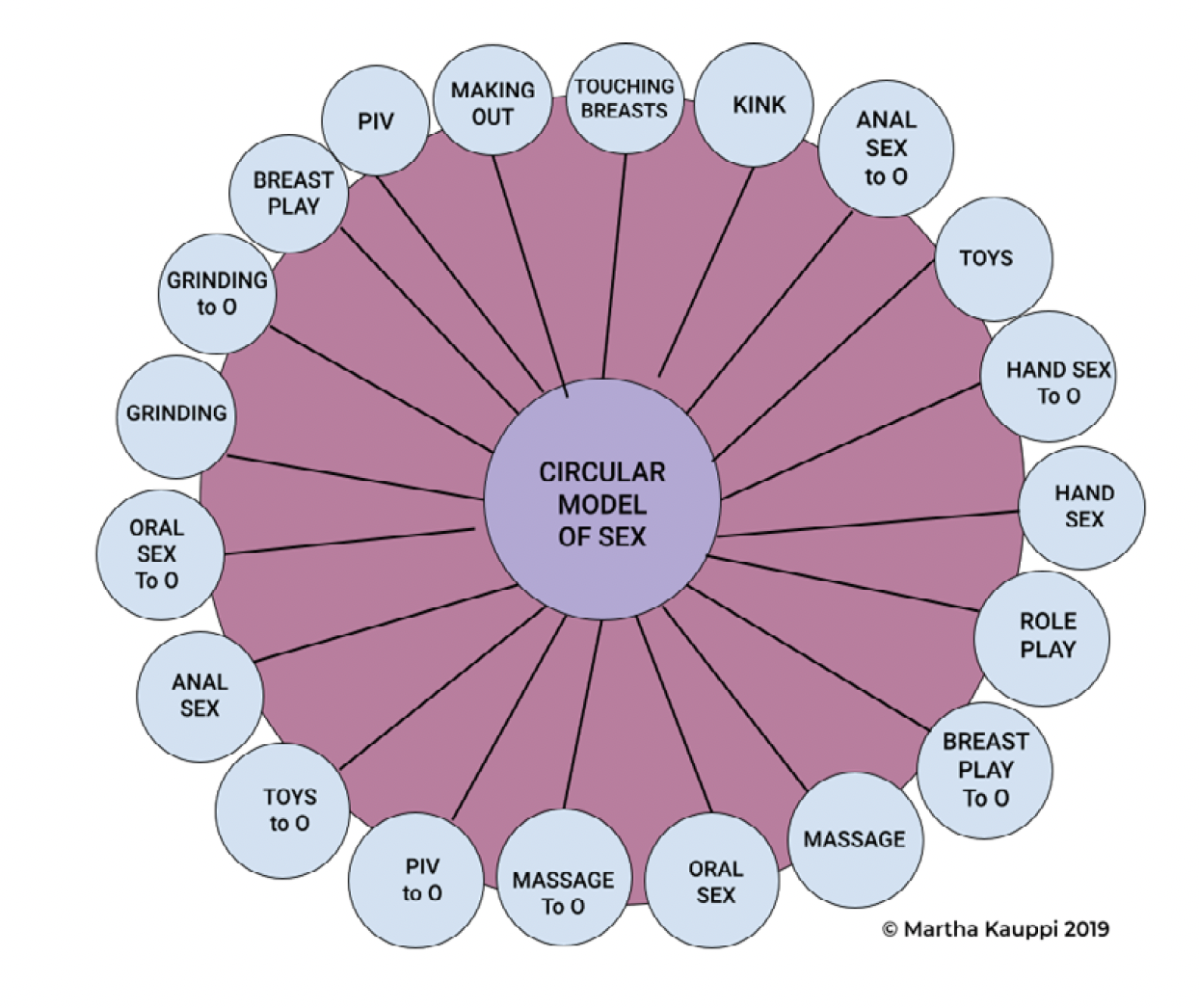Change your approach to sex
When it comes to sex, society has taught us that it's a linear process. We are expected to escalate activities until we reach the ultimate goal: penetrative sex. However, this approach can be limiting and stressful for many people. The circular model of sex provides an alternative way to explore intimacy, where pleasure is the ultimate goal, not just getting to a specific sexual act. Let's look at the differences between the two models and how embracing the circular model can lead to a more fulfilling and pleasurable sexual experience.
Note: this article is based on the workbook by David F Khalili, LMFT, Sex Worriers: A Mindfully Queer Guide to Men's Anxiety to Sex and Dating, or you can consider this alternative way to explore intimacy
Linear Model of Sex
The linear model of sex is a straightforward, predictable sequence of escalating actions that lead to one goal: penetrative sex. While this model can be exciting and enjoyable for many couples, it also creates pressure to perform and achieve each step perfectly to reach the next level. This pressure, in turn, can lead to anxiety, self-doubt, and disappointment, especially if one or both partners can't reach the goal of penetrative sex.
Circular Model of Sex
On the other hand, the circular model of sex is a non-linear, more inclusive model that allows for erotic exploration and experimentation without the expectation of a particular outcome. Unlike the linear model, circular sex doesn't include a fixed endpoint, such as penetrative sex. Instead, it focuses on the pleasure and sensations experienced throughout the encounter. This model encourages partners to move up and down in arousal, explore different activities and positions, and create space for one another's needs and desires to be met.
Communication is Key
One of the essential elements of the circular model of sex is communication. Communicating with your partner about what you like and don't like, what turns you on and off, and how easily you become aroused or lose arousal is essential to creating a positive sexual experience. Emily Nagoski, in her book "Come As You Are," emphasizes that understanding your unique sexual personality can help you explore and enjoy your sexuality more fully. Nagoski outlines the dual control model of desire, recognizing that sexual attraction and arousal have both "accelerator" and "brakes." Knowing what revs your accelerator and what applies the brakes can help you manage your sexual response and increase pleasure.
Take a Breath
It can be helpful to practice mindfulness and grounding before engaging in sexual activity, especially when trying the circular model of sex. Simple breathing exercises can be a quick and effective way to stay present and connected to bodily sensations. For example, take deep breaths while focusing on the feelings in your stomach or chest. These exercises can assist with being present at the moment and help you to move more freely up and down the circular model of sex.
Sex is a profoundly personal and individual experience, and what works for one couple may not for another. Both linear and circular models of sex have their unique benefits and challenges. It is up to you and your partner to explore what feels fitting and comfortable. By communicating openly, focusing on pleasure over outcome, and staying present with your body and breath, you can create a fulfilling and satisfying sexual journey. If you're struggling with sexual issues such as low desire, performance anxiety, or communication problems, consider seeking the help of a sex or couples therapist. By working with a trained professional, you can address underlying issues and learn new skills to enhance your sexual relationship and overall well-being.
If you're ready to take the next step in having better sex and relationships, fill out our consult request form below!
We also help our clients get reimbursed up to 80% of their session fee, if their insurance plan qualifies. Ask for more info in the consult.

